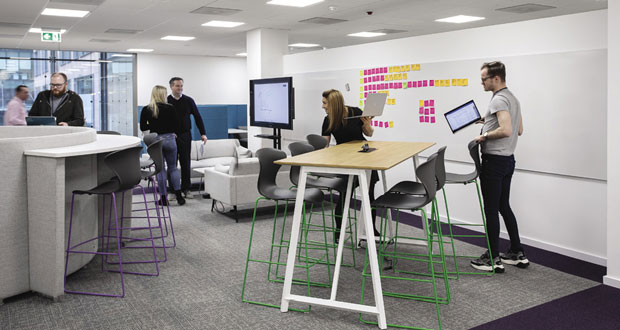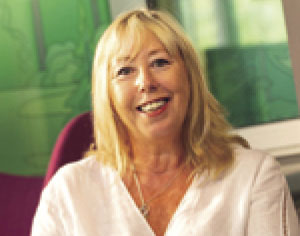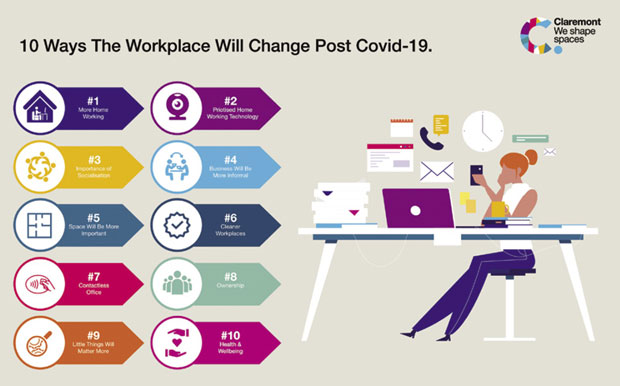One of COVID-19’s most significant legacies will be the reimagining of our collective experience of work – starting with the relationship between the digital and physical workplace. Helen Strother interviewed an interior design and a communications expert to find out how the two align
The last few months have forced organisations to become truly agile and embrace remote working overnight. Consequently, FMs have faced new challenges as they grappled with the increasingly digital requirements of business, the implications for physical real estate and the need for a new seamless blend between the two.
Now that remote working looks set to become more commonplace in the wake of the pandemic (90 per cent of employees would like to work at home more in the future ), it highlights the importance of making it seamless with the experience in the physical office.
Ann Clarke, Director of Future Workplace at workplace consultancy and interior design business Claremont, says this requires organisations to fully embrace agility. “Until we went into lockdown, most businesses were still quite static. They might have started to move towards agility, but they had a largely office based workforce and only partly agile technologies. The last six months have really driven home the message that work is an activity not a place and now there’s an opportunity to do things differently – particularly when it comes to technology and the purpose of the workplace itself.”
The success of the digital workplace is governed by the tools and functionality given to remote workers, for it determines how productive they can be. Clarke adds: “Technology must be easy to use and intuitive, systems must work seamlessly and perhaps most importantly, support has to be readily available when things go wrong. FMs often ask us for plug and play capability and this must now extend beyond the office.
“The priority now is to turn lockdown quick fixes into longer term solutions, particularly regarding secure file sharing, collaboration and customer communications, to ensure that employees feel supported and are productive wherever they are working from. Agile tools, infrastructure and support tie the digital and physical environments together and they have to work in harmony.”
VALUABLE BUSINESS TOOLS
One particular requisite business tool that has been strained over the last few months is the telephone. Many FMs realised their outdated legacy phone systems couldn’t support agile working adequately and in some cases, required someone to remain in the office to field calls and take messages, according to Simon Burlison from telephone answering and live chat provider Moneypenny.
He said: “The phone is a fundamental requirement of business yet many firms couldn’t transfer calls between remote teams, who relying on voicemail to the detriment of their business or were having to give out mobile numbers or rely on message taking during lockdown. None of these things are sustainable approaches, nor do they put the customer first.
“This has highlighted how the focus of remote working tends to be on new exciting tools to support team work – but almost at the cost of the old faithful. The pandemic experience has reiterated just how essential communication is to successful agility. How can employees be productive if they can’t readily take and transfer telephone calls or be accessible to their clients?”
A NEW PURPOSE
How employees will use the office when a sense of normality returns has also been the subject of widespread speculation during lockdown. The question of whether the office will be needed at all has been posed by many. Clarke believes its role is still valid but talks of reinvention. She said: “The office doesn’t need to be the place of head-down every day working anymore. It needs to be a destination – a place that gives the quality experience, tools and interactions that employees can’t get from working from home such as socialisation, community and collaboration.”
Research from Claremont’s annual Workplace Insight Report highlights that 55 per cent of workers expect the workplace will change significantly post COVID, while research from Yahoo Finance suggests that most UK workers do not want to return to the office, after almost six months of home-working. Clarke believes that giving employees a new experience in the office will be part of getting over this hurdle. She said: “Progressive employers won’t be asking their people to come back to the office every day. Offering a blended way of working and making the workplace experience feature rich will be key steps to our continued reinvention of the way we work.”








